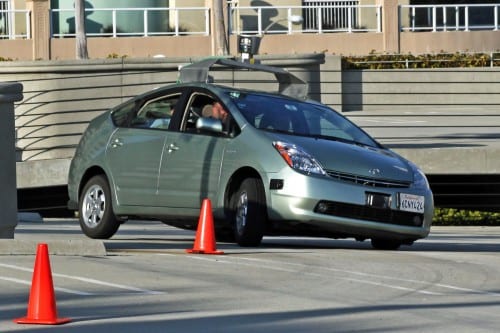
When you watch a sci-fi show or movie, cars can play a big part in setting the scene. Think of the DeLorean in Back to the Future or flying cars of 2015 in Back to the Future Part II. Pretty cool right?
We’re not quite at the level where cars can fly or travel through time, but we’re on the way to having cars that can drive themselves. Even Google are getting in on the act:
The Google driverless car uses laser radars and high definition maps to create routes that the car will follow. There aren’t any plans for Google to start selling their tech just yet, but they do hope that eventually other car makers will want to work with them in the future.
Volvo are also coming up with their own concept. They want to make a car that can take passengers on long distance rides, getting them safely from A to B. Instead of using huge computer systems and laser radars, they want to use the humble magnet, embedded into the road.
While it sounds like both a sensible and zany idea (how very Swedish), Volvo has already carried out some tests. They built a 100 metre test track and drove their modified S60 down the track at 90mph, keeping it in place with the magnets.
They say that all cars could be fitted with the new technology, costing only a few hundred pounds, compared to the Google car technology which costs tens of thousands. The only potential problems that could emerge from this idea is the amount of time and money required to line the roads of Sweden with magnets, which if improperly handled could quickly mount up.
Meanwhile, in Switzerland, the 2014 Geneva Motor show has been attracting another type of autonomous car. The Link & Go 2.0 by AKKA Technologies was unveiled in March as an improvement to the first model, which was unveiled at the previous years motor show. New features included a smartphone controlled parking system, a fully autonomous driving mode (as well as a steering wheel and pedals for when you want a turn to drive) and an ‘augmented reality display’ – so that passengers can watch the world go by within the cabin.
The car itself is powered by two electric motors, which according to AKKA, provides the car with a range of 124 miles. Not bad. In a similar fashion to the Google car, the Link & Go 2.0 uses lasers, cameras and other sensors to create a 360 degree view of the world around it.
AKKA also plan for individual cars to interact with each other, safely coordinating between lanes of cars, pedestrians and cyclists, with them all being part of the city of tomorrow. The other idea that AKKA has is that these cars will become the future of car sharing, picking up and dropping off colleagues who live in similar areas to one another.
When the car is in full autonomous mode, the steering wheel retracts and the front seats can be turned around the face the rear. This creates a relaxing cabin for passengers to socialise with one another, all whilst enjoying the view as the car safely takes them to their destinations.
This last car definitely looks the most futuristic and comfortable, but it may be a while yet before we see these self driving cars out and about on our roads. The Google car currently has the approval to road test their vehicles in California, Nevada, Florida and Michigan, and Volvo have only tested their car on an empty track.
But, I think that one day cars like this may be a common sight, especially for car sharing. Wouldn’t that be a nice way to get to work in the morning, not having to stress too much about being stuck in the morning traffic? You can just let the car do the driving, whilst you relax in the cabin.


